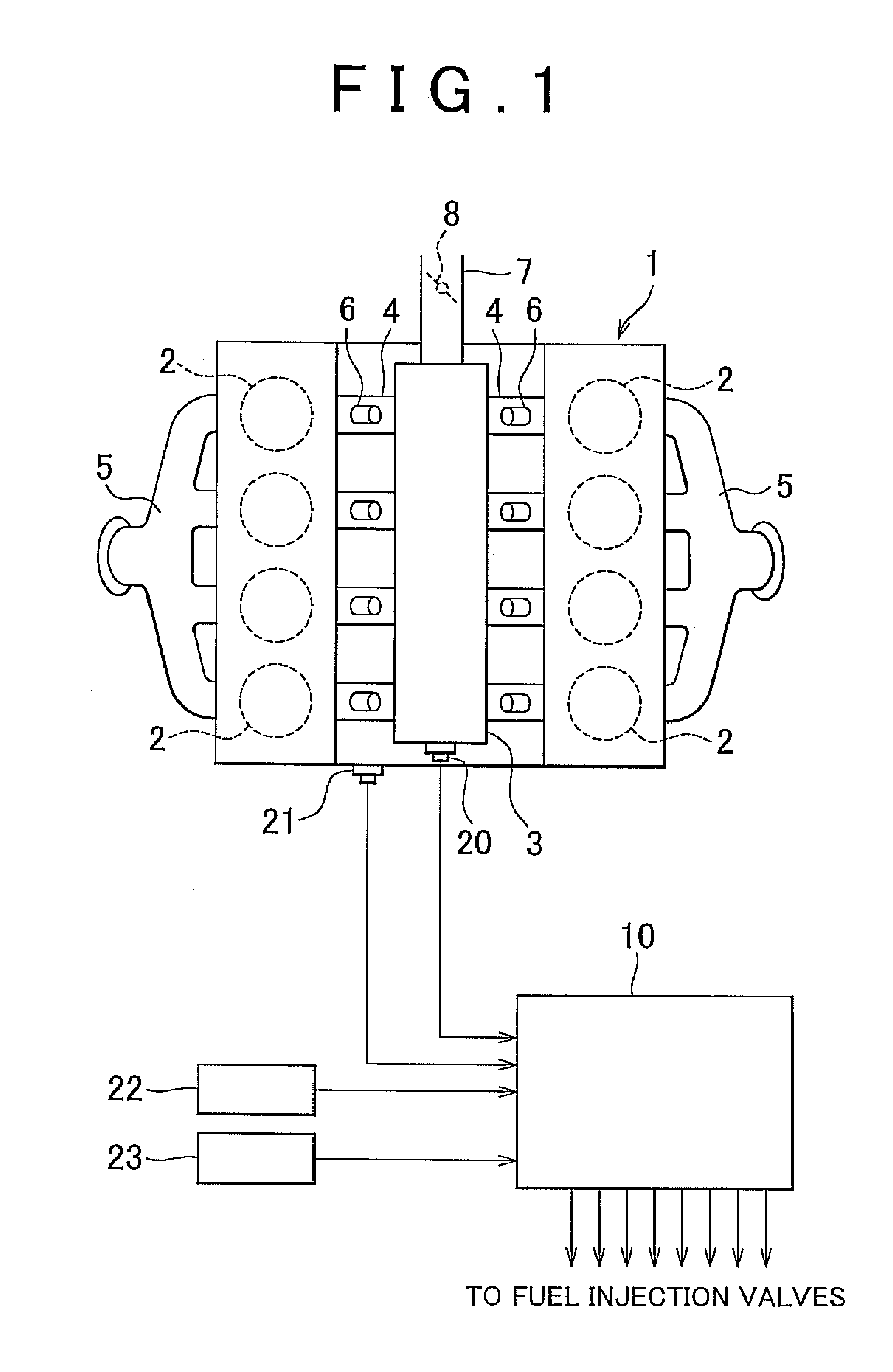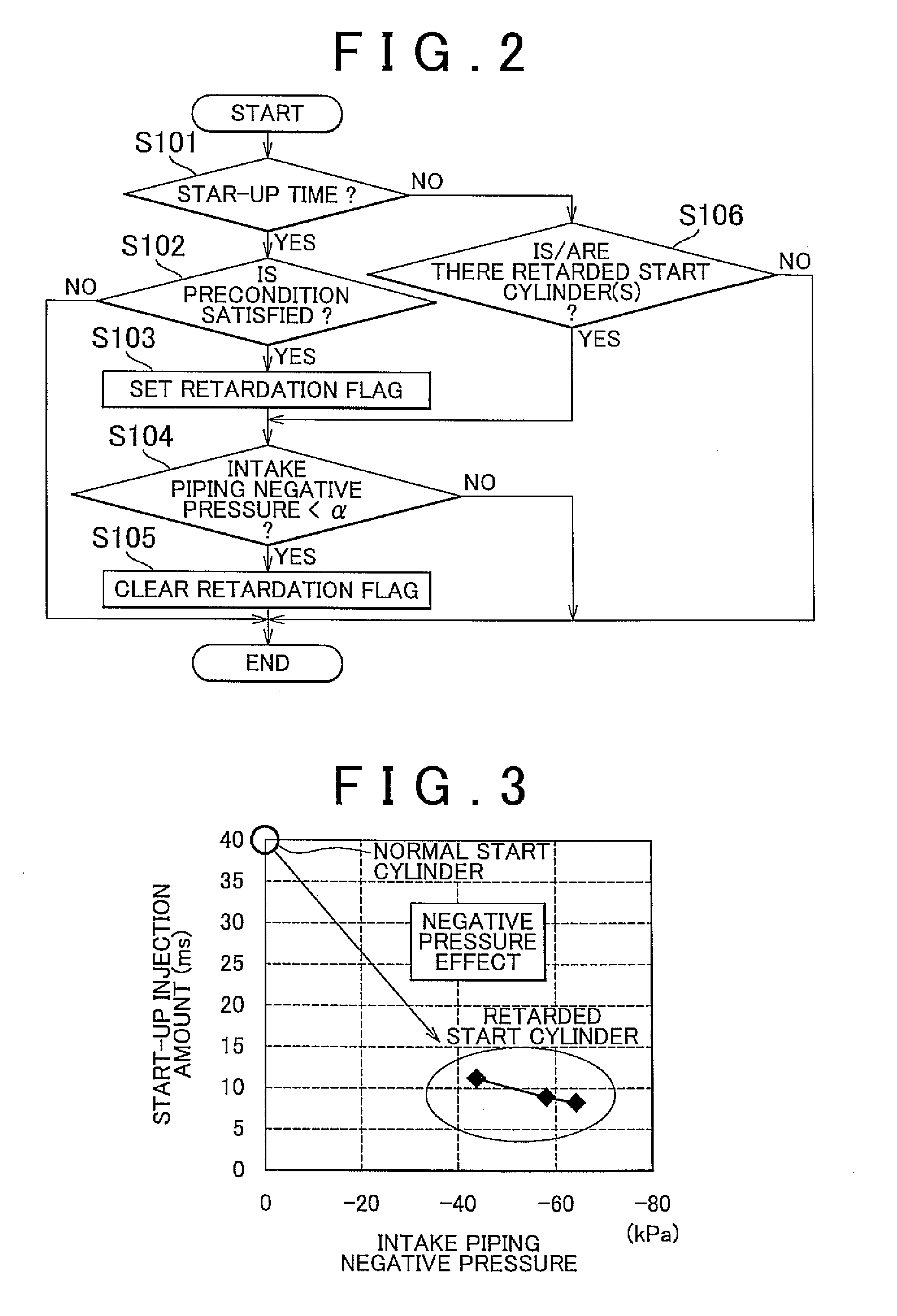Internal combustion engine controller
a technology of combustion engine controller and internal combustion engine, which is applied in the direction of electric control, charge feed system, fuel injection apparatus, etc., can solve the problems of low temperature of the intake piping and the temperature of the wall surface of the intake port, correspondingly large amount of unburned hc is discharged from the cylinder into the exhaust passage, and the negative pressure in the intake piping is not produced
- Summary
- Abstract
- Description
- Claims
- Application Information
AI Technical Summary
Benefits of technology
Problems solved by technology
Method used
Image
Examples
fourth embodiment
[0082]Next, a fourth embodiment of the invention will be described with reference to FIG. 7.
[0083]The controller of the fourth embodiment is used in the engine 1 configured as shown in FIG. 1 as in the case of the first embodiment. Thus, the following description will be made on the assumption that the engine shown in FIG. 1 is used, as in the case of the first embodiment. It should be noted that, in the fourth embodiment, the engine 1 is provided with a variable valve timing (VVT) system and an exhaust gas recirculation (EGR) system. The controller of the fourth embodiment is implemented as part of functions of the electronic control unit 10 as in the cases of the other embodiments.
[0084]The VVT system and the EGR system are used to control torque in the engine 1. However, when the retardative start control described in the above description of the first embodiment is performed, until the fuel injection into the retarded start cylinder(s) is started, the engine 1 is operated with t...
fifth embodiment
[0093]Next, a fifth embodiment of the invention will be described with reference to FIG. 8.
[0094]The controller of the fifth embodiment is used in the engine 1 configured as shown in FIG. 1 as in the case of the first embodiment. Thus, the following description will be made on the assumption that the engine shown in FIG. 1 is used, as in the case of the first embodiment. The controller of the fifth embodiment is implemented as part of functions of the electronic control unit 10 as in the cases of the other embodiments.
[0095]Various auxiliaries and electrical loads are connected to the engine 1, which are, for example, an air conditioning system, such as an air conditioner, heater, etc., a power steering system, headlights, wipers, power windows, brake lamps, etc. When these auxiliaries and the electrical loads operate, the torque produced by the engine 1 is more than a little used. When the retardative start control described in the description of the first embodiment is performed, ...
sixth embodiment
[0104]Next, a sixth embodiment of the invention will be described with reference to FIGS. 9 to 11.
[0105]The controller of the sixth embodiment is used in the engine 1 configured as shown in FIG. 1 as in the case of the first embodiment. Thus, the following description will be made on the assumption that the engine shown in FIG. 1 is used, as in the case of the first embodiment. The controller of the sixth embodiment is implemented as part of functions of the electronic control unit 10 as in the cases of the other embodiments.
[0106]FIG. 9 is a diagram showing both the behavior of the rotational speed of the engine 1 and the variation in the intake piping pressure when operation is changed from partial-cylinder operation to all-cylinder operation. The partial-cylinder operation herein means the operation, in which the engine is operated with the use of the normal start cylinder(s) only. The all-cylinder operation herein means the operation after the initial fuel injection has been com...
PUM
 Login to View More
Login to View More Abstract
Description
Claims
Application Information
 Login to View More
Login to View More - R&D
- Intellectual Property
- Life Sciences
- Materials
- Tech Scout
- Unparalleled Data Quality
- Higher Quality Content
- 60% Fewer Hallucinations
Browse by: Latest US Patents, China's latest patents, Technical Efficacy Thesaurus, Application Domain, Technology Topic, Popular Technical Reports.
© 2025 PatSnap. All rights reserved.Legal|Privacy policy|Modern Slavery Act Transparency Statement|Sitemap|About US| Contact US: help@patsnap.com



